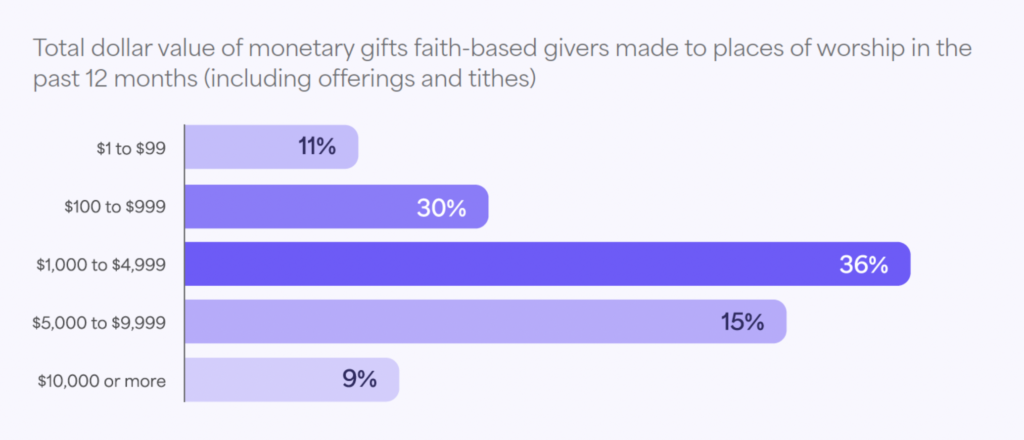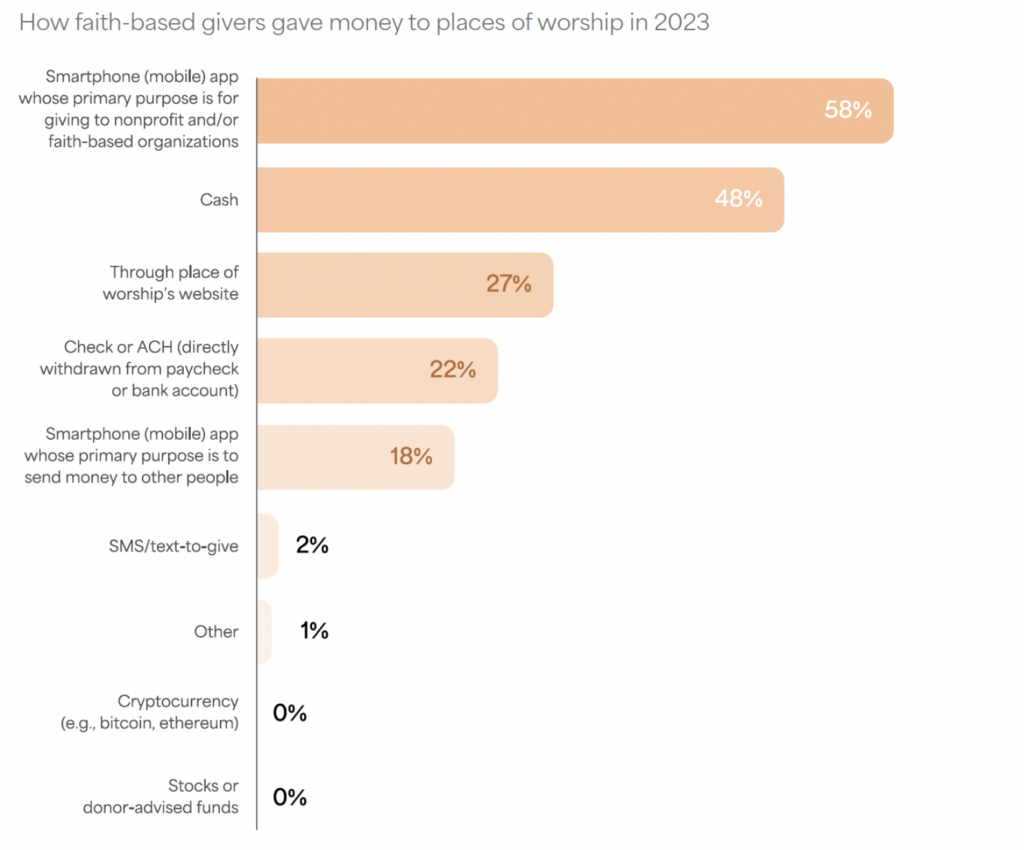Study Finds America’s Faithful are Philanthropists

People and institutions of faith helped reshape American philanthropy in 2023 despite the nation’s daunting economic, political and social challenges, according to the latest “Giving in Faith” report from Givelify and the Lake Institute on Faith and Giving.

The survey found 97% of respondents reported giving money, time or material gifts last year, even as overall giving declined across the U.S. Researchers also reported 40% of givers increased their contributions to houses of worship, compared to 30% who reported giving more in 2022.
One of the more remarkable trends uncovered by the study was that 53% of respondents contributed to other nonprofit groups while still giving to their own congregations, Givelify CEO Wale Mafolasire said.

“When you speak to most people of faith, they usually do not describe themselves as philanthropists, but this behavior tells us there is a lot of philanthropy happening within faith communities,” he said.
And giving to external charities and causes with a faith-based perspective adds a meaningful twist to philanthropy, said David King, director of the Lake Institute on Faith and Giving.
The survey of 1,000 clergy and 2,001 other people of faith found close to 90% attributed their levels of giving to religious beliefs and 80% cited a desire to help people as a secondary motivation.

“We’re talking about people giving to things like the Red Cross, the YMCA, disaster relief, causes in their own communities and a variety of other ways,” King said. “And at the same time, they are giving to their houses of worship at extremely high levels.”
Philanthropic giving also was embraced by houses of worship last year, the study said. “On average, congregations supported about three outreach programs monetarily, in-kind or with time in 2023. Additionally, most (92%) congregations stated that they either maintained or increased their outreach efforts in 2023 compared to 2022.”
For 82% of congregations surveyed, the most support went to primary need organizations such as food pantries and clothing closets. “The interesting thing here is the ways in which faith-based donors and congregations are helping transform their communities,” King said.

A strong majority of faith leaders (87%) contributed to that transformation by increasing the services they provided beyond regular worship, the study found. “Counseling or guidance regarding marriage, financial, family, grief or personal matters was the most common (82%) service offered to congregants, with 89% of the congregations’ spiritual leaders reporting they are personally involved in providing this service.”
Clergy further influenced giving by emphasizing the effect of giving instead of simply appealing for money, King said. “They clearly want to build those bridges between the giving and the need for people who clearly want to give from a place of faith. The message has to be about the ways giving contributes to transforming their houses of worship and their local communities.”
Faith leaders also were key players in helping establish digital giving as the new norm in American religious life, the report notes. “The collection plate has moved to online platforms, with 98% of places of worship now offering digital giving (up from 64% pre-COVID). And 88% of people of faith used digital giving to donate to organizations, causes or people they supported in 2023.”

The pandemic gets a lot of the credit for bringing digital giving into nearly all U.S. congregations, Mafolasire said. “Before COVID-19, I would hear a lot of people say they were writing checks at church but everywhere else they were swiping credit cards. The pandemic forced a lot of digitization across every industry, and naturally that would bring itself into houses of worship. Now we’re seeing this ease and comfort with digital giving.”
King said this development presents a challenge for clergy. “The question for religious leaders is how to continue to communicate theologies and practices around giving when the plate isn’t being passed around the way it once had been.”
Younger generations also present a challenge for religious leaders and congregations, the study explains. “Compared to older generations, Millennial and Gen Z faith-based individuals are less likely to engage with their places of worship. They also practice religious behaviors, such as praying, reading Scripture or attending worship much less often than older generations.”
Access to MinistryWatch content is free. However, we hope you will support our work with your prayers and financial gifts. To make a donation, click here.
Millennial and Gen Z respondents said their giving is tied much more to social justice causes than to institutions. “This mirrors other studies that show social justice is particularly important to Gen Z, and they are more likely to support grassroots movements over established nonprofit organizations,” the report explains.
The study found only 50% of Gen Z individuals believe money ultimately belongs to God, and only 43% believe faith-based organizations make a difference. Among Baby Boomers, on the other hand, 66% believe money belongs to God and 65% believe religious institutions make a difference.
Despite social and economic challenges, the researchers forecast strong individual and congregational giving to continue in 2024. Of those who gave to congregations in 2023, 95% said they will do so again at the same or higher levels. And 94% of donors to nonprofits said they will support those causes again.
“Faith leaders are committed to making a bigger impact in their communities in 2024,” the report says. “Almost all (99%) plan to maintain or increase their community outreach efforts, and 72% plan on increasing their outreach, particularly to support primary needs (food and clothing), housing (through rental support or shelters), women and senior initiatives, and disaster relief.”

This article was originally published by Baptist News Global. It is reprinted with permission.



